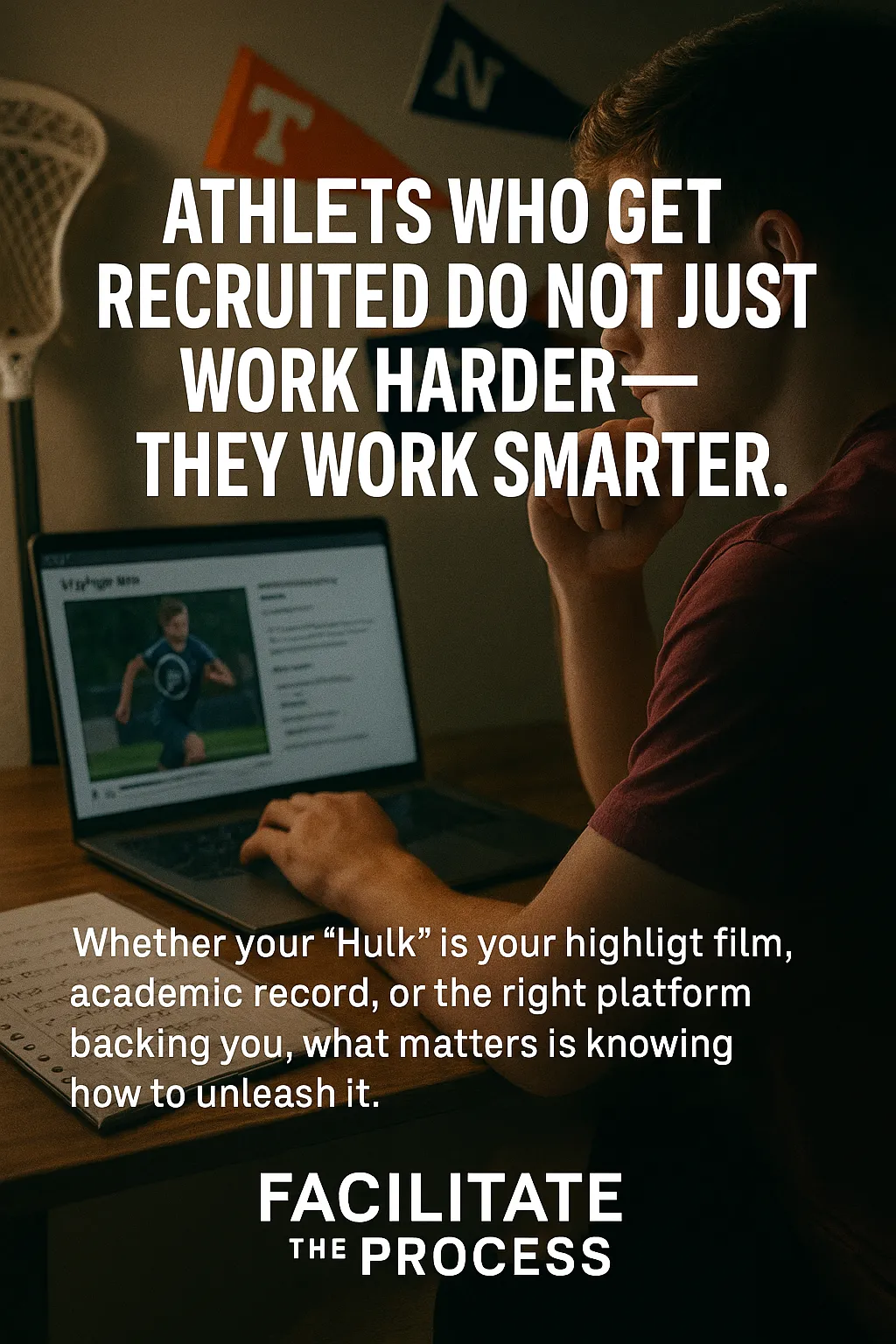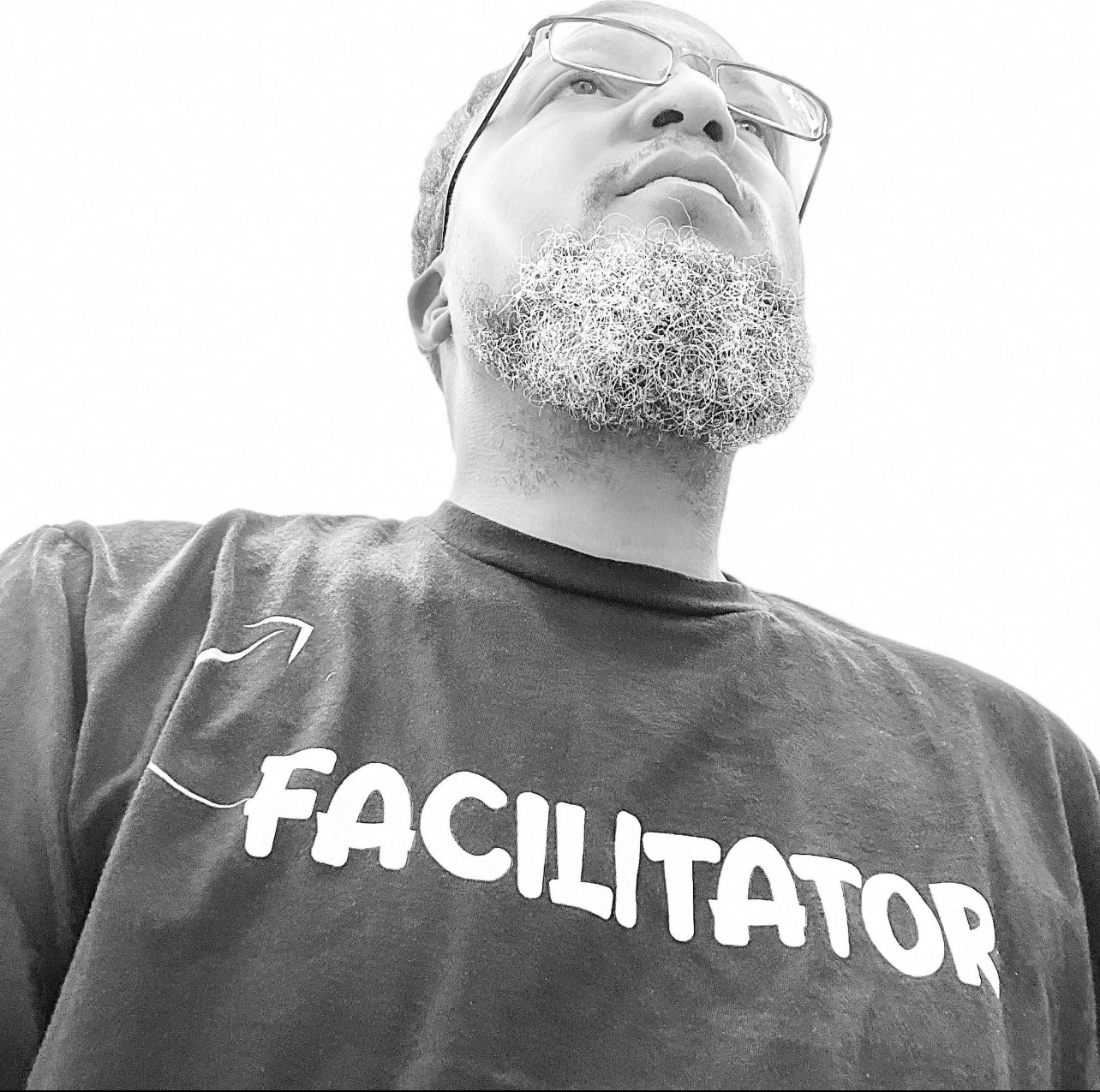
Beyond Stats
Beyond Stats Leveraging Your Unique Qualities in Athletic Recruiting
The Hulk = Your Hidden Power
College coaches scan hundreds of student-athlete profiles every month, but only handful stand out. difference often comes down to one thing: what makes you unique. Athletic recruiting is not just about stats or highlight reels. It is about identifying and showcasing the edge that sets a player apart. Think of the Tony Stark “We have a Hulk” moment, not every athlete brings the same strengths, and teams are built on a mix of talents. This article breaks down how student-athletes can use their unique qualities to gain a real advantage, leverage modern recruiting software, and keep their exposure high in a crowded field. If you want to be noticed, the key is not to blend in. Coaches notice what makes you different. Here is how to use that to your advantage and turn it into your recruiting superpower.
Why Coaches Value What Makes You Different
Coaches do not just look for the highest scorer or the fastest runner in athletic recruiting. A successful roster depends on a variety of skills, personalities, and backgrounds. A player’s unique edge could be anything from leadership on the court to the ability to adapt quickly under pressure. Coaches spot these differences during games, workouts, interviews, and even while scanning a student-athlete profile. The right mix of talent and attitude can elevate a team’s culture and performance. When coaches see an athlete who brings something extra, a “Hulk” on their own team, they take notice and often prioritize that recruit.
Recent feedback from college recruiters shows that intangibles like resilience, communication, and self-awareness carry as much weight as statistics. These qualities do not always show up in box scores, but they consistently influence scholarship offers and roster decisions. For athletes, reflecting on what sets them apart and communicating it clearly in their recruiting materials makes a real difference.
Building a standout student-athlete profile involves more than listing awards. It requires highlighting those unique strengths and showing real examples. Whether it is a game-winning play, a leadership moment, or an academic achievement, coaches want to see how an athlete’s edge translates to real impact. This is where tailored recruiting software and exposure tools become game changers.
Building a Standout Student-Athlete Profile
A student-athlete profile serves as the first impression for many coaches. With hundreds of profiles to review, coaches quickly move past generic presentations. Instead, they look for clear indicators of what makes an athlete special. Crafting a profile that highlights both physical stats and intangible qualities is essential for any high school recruiting system.
Start with the basics, athletic stats, position, academic achievements, and contact information. Then, add details that show personality and leadership. Include a section that describes your unique edge. This could be a summary paragraph or a few bullet points that connect your strengths to team needs. For example, if you are known for your defensive hustle or your ability to motivate teammates, make that prominent. Use action words and specific outcomes to illustrate your value.
Modern recruiting software often allows athletes to add video highlights, coach recommendations, and academic records. Take advantage of these features. A well-organized student-athlete profile with diverse content demonstrates preparation and commitment. For more detailed templates and real examples, visit the Role Player Guide to Recruiting for actionable ideas.
Keep the profile updated throughout the recruiting timeline. Coaches appreciate seeing recent achievements and improvement over time. Even small updates signal that an athlete is active and invested in their journey.
How Recruiting Software Boosts Your Exposure
Recruiting software has become the backbone of successful athletic recruiting. These platforms give student-athletes the tools to track communication, upload new highlights, and monitor their progress. College exposure tools built into recruiting software help athletes get seen by more programs, even outside their immediate region or sport.
One of the biggest advantages is the ability to organize contacts and messages. Instead of juggling emails or social media, athletes can keep everything in one place. Automated reminders ensure that no deadline or opportunity slips through the cracks. These systems also allow coaches to search by specific skills, academic achievements, or leadership qualities, increasing the odds of matching the right athlete to the right program.
Some recruiting software platforms offer analytics showing which coaches have viewed your profile, what content gets the most attention, and where you rank among peers. This data helps athletes make strategic updates and focus on areas that matter most. For a closer look at how technology supports exposure, visit the Facilitate The Process Information Portal.
Effective Ways to Use Your Edge in a High School Recruiting System
The high school recruiting system rewards preparation and self-awareness. Athletes who know their edge and can clearly articulate it become memorable to coaches and recruiters. To maximize opportunities, follow these practical steps:
Identify your unique qualities, ask coaches, teammates, and family what stands out about your play or character.
Align your strengths with team needs, research the programs you are targeting and tailor your communication accordingly.
Show, do not just tell, use video clips, stats, and real stories to give coaches a clear picture of your edge in action.
Keep your materials fresh, update your student-athlete profile and highlight new achievements throughout the recruiting timeline.
Use college exposure tools to expand your reach beyond local programs.
Every recruiting system values authenticity and effort. Over time, these habits build a reputation that can lead to more meaningful opportunities and offers.
Tracking Progress with College Exposure Tools
College exposure tools do more than just put your name in front of coaches. They track which programs have viewed your profile, monitor engagement, and provide feedback on areas to improve. This data-driven approach helps athletes understand where they stand and where to focus their energy.
Some platforms allow athletes to set goals and reminders, such as following up with coaches or updating academic records. These tools also make it easier to share new highlights, test scores, or references with multiple programs at once. Staying organized and proactive signals maturity and professionalism to recruiters.
Using college exposure tools effectively means reviewing analytics, adjusting your strategy, and responding promptly to inquiries. For student-athletes, this approach turns a passive process into one where they actively shape their own athletic recruiting journey.
Managing the Recruiting Timeline for Maximum Impact
The recruiting timeline can feel overwhelming without the right tools and strategy. Coaches often have strict deadlines for reviewing profiles, scheduling visits, and extending offers. Missing a window can mean losing out on a spot, even if you have the right skills. Managing this timeline requires more than just reminders, it requires a plan.
Successful athletes map out key dates, such as NCAA signing periods, high school showcases, and academic tests. They use recruiting software to set reminders and track progress, ensuring that nothing gets overlooked. Many also keep a detailed checklist for each program they contact, noting any feedback or requests from coaches.
For families and coaches, supporting an athlete through this timeline means encouraging regular updates and honest communication. Timely responses and consistent follow-through are often the difference between a missed opportunity and a scholarship offer. For a step-by-step breakdown of the recruiting process, take a look at the Recruiting Maze Guide.
What Coaches Actually Look for in Student-Athlete Profiles
Coaches are searching for more than just athletic stats when reviewing student-athlete profiles. They want to see a complete picture: skills, academics, leadership, and growth. A profile that clearly communicates these areas gives coaches the confidence to start a conversation and move forward in the recruiting timeline.
Key elements coaches value include:
Academic achievements and eligibility status
Physical and athletic stats, updated regularly
Personal statement highlighting unique qualities and goals
References and recommendations from trusted coaches or mentors
Evidence of improvement and dedication over time
Profiles that are cluttered or unfocused lose coaches’ interest quickly. Keeping information clear, concise, and relevant helps coaches see the value an athlete can bring to their team, both on and off the field.
Turning Your Edge Into Action: Communication Templates and Real Examples
Knowing your edge is only half the job. Communicating it effectively is where opportunity happens. Student-athletes who reach out to coaches with clear, personalized messages get more responses and more meaningful conversations. Here are practical templates and examples to use:
“Coach [Name], I noticed your team values defense and hustle. My strength has always been shutting down the opposing team’s top scorer, and I recently earned my school’s Defensive Player of the Year award. Would you be open to reviewing my profile and discussing your program’s needs?”
“I thrive in high-pressure situations and have led my team as captain for two seasons. I believe my leadership style fits well with your program’s culture and goals. Here is a link to my latest highlight video and academic records.”
“My flexibility on the field has allowed me to fill multiple positions, and I focus on supporting teammates both on and off the court. I am looking for a program that values versatility and team chemistry.”
For more templates and ideas, athletes can visit the Art of Athletic Recruiting article. The right words, delivered at the right time, turn a strong edge into real offers.
Common Mistakes That Hide Your Edge
Even talented athletes can miss out on opportunities if they fail to communicate their edge. Common mistakes include overloading a student-athlete profile with irrelevant stats, using generic language, or failing to update information. Coaches notice when an athlete’s presentation feels copy-pasted or out of date.
Another misstep is ignoring feedback from coaches after a showcase or contact. Athletes who listen and adapt their approach stand out for their coachability, a trait recruiters value highly. Tracking every interaction and making thoughtful adjustments shows maturity and persistence.
Finally, relying solely on athletic ability and not highlighting academics, leadership, or community involvement weakens a candidate’s profile. Coaches want well-rounded athletes who will represent their program positively. Avoiding these mistakes and focusing on a complete presentation ensures an athlete’s edge is never hidden.
The Power of a Team Advantage: Building Your Support System
Even superheroes need a team, athletes who build a strong support network of family, coaches, and mentors have a real advantage. These supporters help keep materials organized, encourage regular updates, and provide honest feedback. They also hold athletes accountable throughout the recruiting timeline, helping them stay focused and motivated.
Many families use recruiting software together, tracking progress and deadlines as a team. Coaches can provide insights into what makes an athlete stand out and offer recommendations that carry weight with college recruiters. For those seeking more structure, the FTP Information Portal offers resources on creating a collaborative approach.
Building a team advantage is not about doing it alone. It is about using every available tool and relationship to maximize exposure and opportunity. The result is a student-athlete who feels empowered, confident, and fully prepared for the next step.
Moving Beyond the Offer: What Happens After You Get Noticed
Getting noticed is only the start. Once a coach reaches out, athletes face new decisions: campus visits, scholarship negotiations, and managing multiple offers. Staying organized and clear on personal goals helps athletes navigate these choices with confidence.
Recruiting software can track offers and communication, helping athletes weigh their options. Families and coaches play a key role by offering perspective and asking the right questions about academics, team culture, and long-term fit. For more on the decision-making process, visit the Decision Phase Guide.
Ultimately, success in athletic recruiting is about more than landing a spot on a roster. It is about finding a program that fits an athlete’s strengths, values, and goals, setting the stage for growth both on and off the field.
Why Your Edge Matters Long After Recruiting
Every athlete’s edge, whether it is leadership, resilience, or a unique skill, serves as a foundation for success in college and beyond. Coaches may first notice the difference during recruiting, but those same strengths carry forward into academics, future careers, and life. The recruiting process is a test run for skills that matter long after the final whistle. When athletes focus on what sets them apart, they build habits of self-awareness, communication, and continuous improvement that last a lifetime. That is the true power behind standing out in recruiting. Every team needs a Hulk, and every athlete has the potential to become one.





